The high-speed all-electric railroad locomotive uses a catenary-wire system and pantograph power-transfer arrangement, which appears to violate good engineering practice and should not work. Still, it does, transferring hundreds of amps via a contact point moving at over 100 miles/hour.
There are four ways to power a railroad locomotive: via a steam engine (with a tender carrying fuel such as coal, wood, or oil), a diesel engine and transmission to the wheels, a diesel-electric arrangement, or an all-electric engine with power supplied from an external source. The steam locomotive is largely obsolete except for tourist trains and some outside-the-mainstream scenarios, and the diesel-only engine is sometimes a viable option but difficult to control at all speeds and torques. In contrast, the diesel-electric (often simply called “diesel” although that is a little misleading) and all-electric locomotives are in widespread use.
Both the diesel-electric and the all-electric engines use electric-traction motors (AC or DC, both are used) to drive their wheels. However, how they get that electricity and power is quite different. In the diesel-electric locomotive (Figure 1 and Figure 2), diesel fuel carried on board (typically, a tank of several thousand gallons) is used to drive a diesel engine, which in turn powers an electric alternator acting as a generator. The output of this generator is controlled and drives the motors.
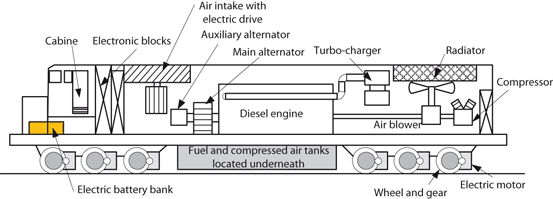
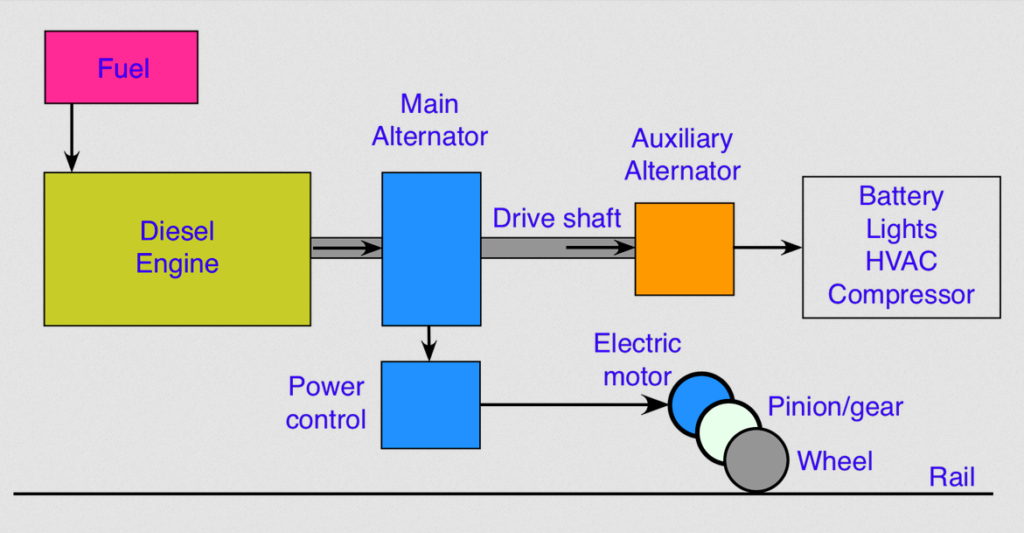
The all-electrified locomotive is far less complicated (Figure 3). There is no need to carry any on-board fuel, diesel engine, or diesel-electric generator, nor their controls and auxiliary support systems.
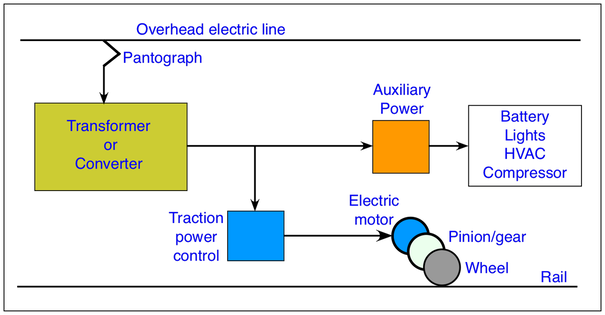
Instead of carrying its own fuel, it draws power from overhead electric wires via an overhead pantograph assembly (Figure 4) (further discussed below) or third rail and contact shoe (Figure 5). This power is regulated and controlled at the locomotive to drive the wheel motors. Modern solid-state electronics and power-control devices such as high-voltage IGBTs and SCRs make the electrical-power aspects of the diesel-electric and all-electric locomotive efficient and support sophisticated motor management. Some electric locomotives rectify the alternator output and use DC traction motors; others use its output to create a controlled AC waveform and employ AC traction motors. Power return for both overhead and third-rail power is via the tracks (called the “running rails” in third-rail/shoe systems to distinguish them from the third rail).
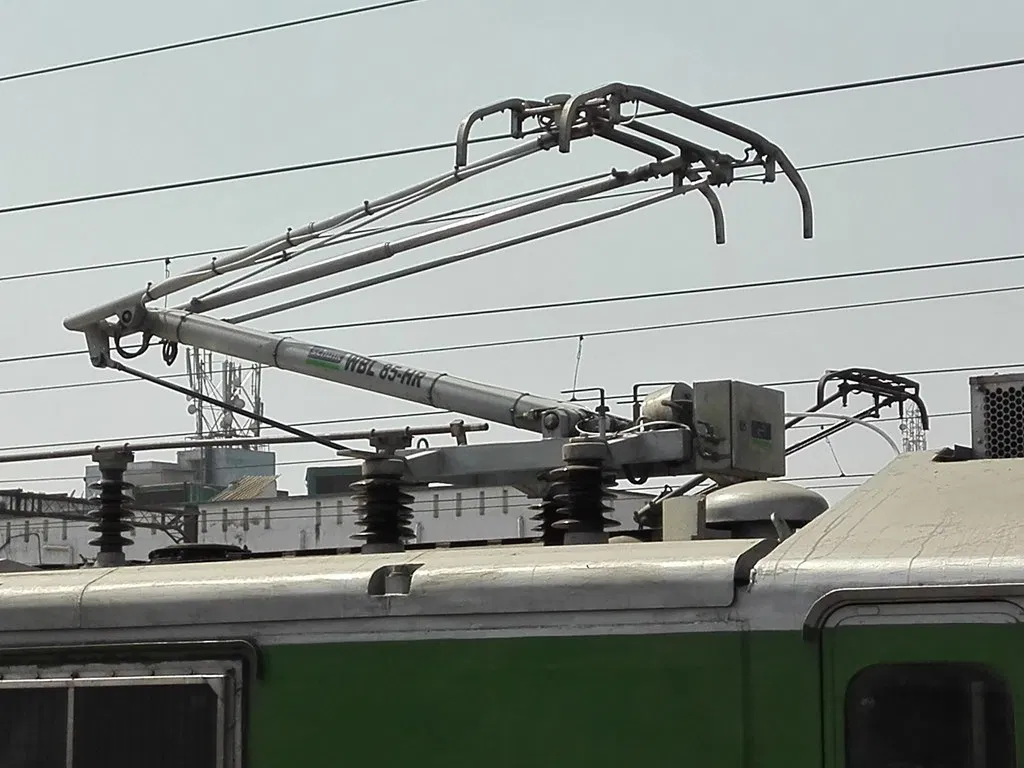

Which is a better solution for pulling a string of freight cars or passenger coaches? Each approach brings tradeoffs:
- The diesel-electric is self-contained and does not depend on a remote source of power;
- The all-electric is far lighter since it eliminates the need for the on-board fuel, diesel engine, or diesel generator; it pushes the power source back to a centralized location.
- The all-electric requires significant and costly installations along the entire track right of way for the catenary or third-rail assembly;
- It’s much easier to limit the pollution and its spread, as well as the broader environmental impact, with the all-electric approach, since power is provided from one or a few centralized power station. In contrast, each diesel-electric locomotive is its own source of pollution that must be managed.
- The efficiency of the all-electric locomotive itself is much higher than that of the diesel electric since it does not have the losses associated with the diesel engine or generator; in effect, it pushes the largest source of inefficiency back to the power plant;
- The all-electric locomotive is simpler, less expensive, lighter, and easier to operate and maintain for given power level. It needs only a power controller, while the diesel-electric also needs controls for diesel engine and the generator control.
- The all-electric approach needs 100% continuity of the running rails since they are the power-return path.
Tomorrow, in Part 2, we will look at the power requirements in more detail.
EE World References
“Electrified Locomotives, Tunnels, and the Pennsylvania Railroad: Astonishing engineering but a partially sad ending, Part 1: The challenge”
“Electrified Locomotives, Tunnels, and the Pennsylvania Railroad, Part 2: The tunnels”
“Electrified Locomotives, Tunnels, and the Pennsylvania Railroad, Part 3: The station”
IGBT 1,200V/900-A-rated modules handle industrial drives, heavy-duty vehicles, power inverter apps
Gate-driver system targets new 1.7-kV to 4.5-kV IGBT/SiC dual power modules
IGBT module platform handles 450-A at up to 6.5 kV
Magnetic gear tooth sensor IC optimized for traction motor apps
Wide-input-range, high power density dc-dc converters optimized for railway traction, rolling stock apps
DC-DC Converters for Railway Traction and Rolling Stock Applications
External References
- Engineering Toolbox, “Cable Loads”
- The Railway Technical Website
- Ofil Systems, DayCor Rail
- Engineering Master, “Working of electric locomotive”
- Engineering Master, “What is Pantograph?”
- Allied Insulators, “Transmission & Distribution”
- “Railway Signalling Concepts”
- net, “Electric Traction Systems”
- Wikipedia, “Third Rail”
- Pennsylvania Railroad GG-1 Electric Locomotive
- Curbside Classic, “Trackside Classic: Pennsylvania RR GG1 #4935

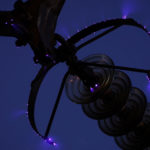
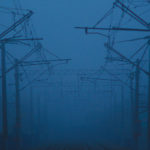
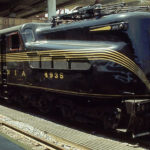

Leave a Reply